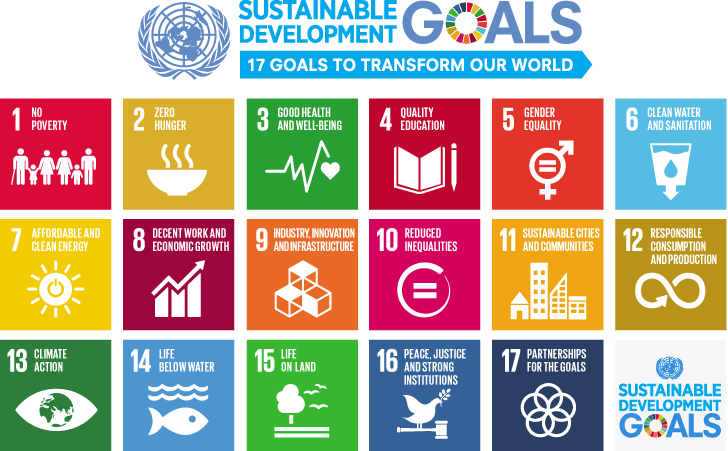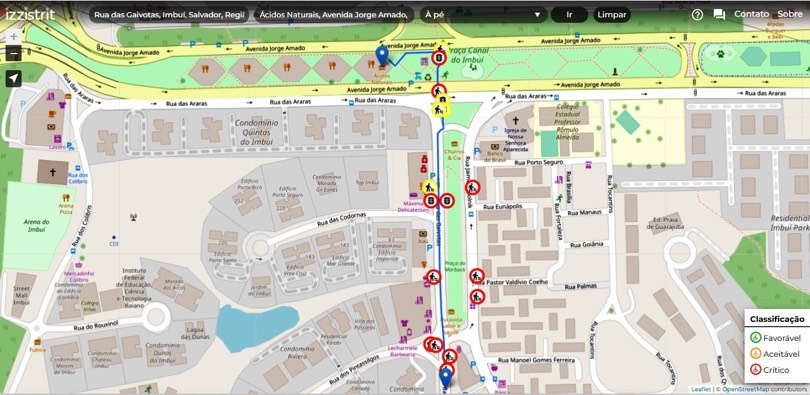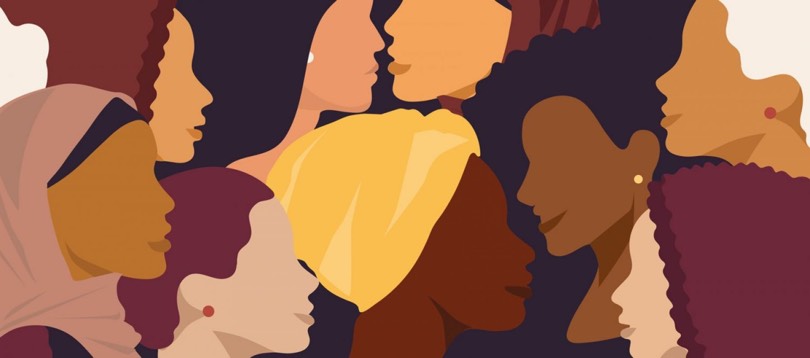
Design for a better world - How working together and applying design approaches is improving people's lives
November 6, 20239 November is World Usability Day 2023. This year’s theme is Collaboration and Cooperation, which intents to focus on how we can work together to create solutions, both globally and locally, to solve the world’s biggest problems. These problems are closely related to the United Nations (UN) Sustainable Development Goals (SDGs).
To mark this day we’re reflecting on how design tools and approaches can help to develop products and services that have a positive impact on people’s lives. We’re also highlighting some projects that have successfully worked towards achieving one or more of the UN Sustainable Development Goals.
What are the United Nations Sustainable Development Goals?

Adopted by the United Nations in 2015, the Sustainable Development Goals are a collection of 17 interrelated goals that provide a roadmap to end poverty, protect the planet, and ensure that by 2030 all people enjoy peace and prosperity. The goals address and respect the three dimensions of sustainable development — social, economic and environmental.
The universal nature of the goals means they apply to all 193 countries, not just the poor, least developed ones. Each goal must then be implemented differently in each country, according to its socio-economic context. Taking the example of Goal 2: Zero hunger — while some countries are still struggling with hunger and malnutrition, others should be more concerned with promoting a healthy diet and combating obesity. When it comes to Goal 7: Affordable and clean energy — while certain populations are concerned with access to energy, others consume great amounts and need to find ways to reduce its consumption and the impact on the environment.
Designing to address the UN SDGs

Photo by Tima Miroshnichenko on Pexels
“Money and policy are the most frequently cited enablers of sustainable development goals, but money is wasted, and policy becomes ineffective if we fail to include design as a critical enabler of sustainable development goals. Design can inspire investment, influence policy, and bring together stakeholders in such a way that it promotes scalability of the SDGs.”
Diane Hoskins in “Why Designing for the Human Experience Is Key to Advancing SDG Goals”
Designers can create positive impact on social, economic, and environmental issues directly linked to the SDGs by partnering with governments, NGOs or the private sector.
When faced with a given problem, in a specific context, designers can put design methodologies at good use and dare to come up with radically new solutions. Those solutions are not always physically tangible but rather experienced in the abstract. With a co-creation mindset, designers can work different and better to ignite change, particularly at a local level. If solutions are well thought-through and centered in the people who are directly affected by them, more can be done with less resources.
Which design approaches are commonly used?
When it comes to applying design to address sustainable goals, several concepts and tools are often put at use. While they might have different names and scopes, there’s one thing they all have in common — putting people needs and desires at the centre of priorities.
Design Thinking
Design thinking is a process for creative problem solving that puts people and their needs at the centre. It’s a highly collaborative and iterative method that consists of five phases — Empathise (gain real insights about users through research), Define (identify users’ needs and problems), Ideate (generate ideas and develop solutions), Prototype (create a prototype of the solution) and Test (test the prototype and iterate to redefine).
Design thinking helps us build innovative solutions based on the needs of those we're creating for and can be used in business, government, education or nonprofit organisations.
🛠️ Tools worth checking:
- IDEO Design Thinking
- Design Thinking. A Guide for Prototyping and Testing Solutions for the Sustainable Development Goals
- Collective Action Toolkit
Human-Centered Design
Much like design thinking, human-centered design is about empathy and understanding each individual’s situation, with particular needs and behaviours. It’s primarily based on the direct engagement with real users by researching, understanding and interacting with them. Putting real people in the centre of the design process and designing systems according to the user’s real context of use allows us to create more useful and usable products.
How does it compare to design thinking? — While human-centered design is highly linked to good usability and user experience, design thinking is more focused on coming up with innovative solutions for complex problems. Design thinking goes beyond screens, websites or apps, as it can be used to develop solutions for a wide range of challenges — be it business, economical, governmental, social or environmental.
For a complete overview of common features and main differences of the two approaches check the article “Design Thinking — new old creativity”.
🛠️ Tools worth checking:
Systemic Design
The sole existence of the Sustainable Development Goals is proof of the many challenges the world is facing today. Large scale and ambiguous problems, that involve multiple stakeholders, remain unsolved and there’s just not a simple solution to fix them. Systemic Design is a recent concept that emerged from the need to tackle those complex issues.
While systems thinking helps us understand dynamic and higher order systems, by understanding the whole structure and how different elements interact with each other, design thinking is used to solve defined problems. When presented with more ambiguous challenges we certain gain from combining the two. That’s why systemic design integrates systems thinking and design practices. Both domains contribute to each other and are combined to come up with new perspectives, processes and ideas.
🛠️ Tools worth checking:
Co-Design
Instead of having public authorities planning urban areas, why not involving the local communities to help shape the design of their own neighbourhoods? And when it comes to health services, why not involving patients, healthcare providers, and administrators in the design of better patient experiences?
The co-design methodology is about calling people in to participate in the design process and actively collaborate with them to come up with innovative, practical and relevant solutions. To apply co-design it’s important to take advantage of tools that spark ideas and help participants articulate them.
Co-design can be particularly relevant in the public sector, where bringing community members to collaborate with experts can lead to more beneficial outcomes.
🛠️ Tools worth checking:
- Design for Social Impact. How-to Guide
Leveraging design for positive impact — some examples
Ending poverty, ensuring everyone has access to clean water and sanitation, guaranteeing peaceful and fair societies — there are problems that just seem to difficult to eradicate. However, while a single project it’s unlikely to solve such complex problems altogether, working towards achieving one or more goals will certainly contribute to ease the live of individuals and communities around the world.

The iF Social Impact Prize supports design projects that contribute to improving our society and achieve the UN Sustainable Goals. In 2022, one of the winning projects was Izzistrit, a platform developed by a Brazilian company that helps people with disabilities or reduced mobility in safely navigating urban spaces with independence and autonomy. Through digital maps, chatbot, and AI-powered application, people can get the most suitable routes and are recommended accessible-friendly commercial establishments, all adapted to each disability. This project clearly aligns with Goal 10: Reduced Inequalities, and it’s a great example of how technology can be used for good and help improve the life of people with disabilities.

In 2016, IDEO.org (a nonprofit design studio that designs products and services alongside organisations that are committed to creating a more just and inclusive world) and Alight (an organisation focused on helping refugees and providing disaster relief) partnered to developed a platform for tracking customer satisfaction among refugees in real-time. It’s called Kuja Kuja and allows humanitarian organisations to prioritise the people they’re serving and improve the services they provide. Alight staff travels around the refugee settlement with tablets collecting customer satisfaction data on an app and suggestions for how to improve service. Those suggestions are aggregated into a dashboard showing people’s perspectives in real-time.

ThinkPlace, an Australian design agency who works with governments, private sector enterprises and NGOs around the world, shares how they worked with the Bill & Melinda Gates Foundation to identify opportunities to provide better access to affordable high-quality menstrual hygiene solutions for Nigerian people in the low-middle-income and low-income levels. ThinkPlace conducted a deep ethnographic study where they engaged with Nigerian women across different age groups, locations and socio-economic groups who shared their everyday experience about their period, their life and the challenges they face in menstrual hygiene management. Their approach focuses on making people actively involved in the research:
“We do not just collect insights from participants, rather, we involve them in an ongoing, generative partnership, empowering them to be an active part of shaping their future and the world. We are moving them beyond research subjects to become true co-creators.”
Designers have what it takes to make a difference
Creativity, interdisciplinary knowledge, big picture thinking. These are few traits that put designers and researchers in a unique position to tackle the world’s toughest problems addressed by the SDGs.
Over time, designers have moved from simply designing things to handling problems in different areas. That’s why companies, governments, and non-governmental organisations are hiring designers who take advantage of design tools and approaches to solving complex problems through innovation.
“Design is plan for action.”
Charles Eames
Actions taken together — whether those actions create community-designed green space for Brooklyn and the Bronx residents or develop a sustainable water and health social enterprise to address health challenges of low income communities in Nairobi — are meaningful steps to make this dream of a better, fairer, and more sustainable world for all a bit more tangible.
Related Articles
-
Digital Accessibility Strategy Course [starts in January 2025]
The new Digital Accessibility Strategy course aims to equip participants with the essential skills to understand the digital accessibility landscape.
-
Looking to be EAA compliant? — Don’t fall for easy web accessibility solutions
Choosing an overlay is just a band-aid solution, and shows a true disregard for users with disabilities. Instead, we need to work towards a mentality where websites, apps and other digital products are designed and coded with accessibility in mind from day 1.
-
Prompt-based — The birth of a new human-machine interaction model
The ways humans interact with technology has evolved significantly over the decades — and it’s still constantly evolving. The rise of Artificial Intelligence (AI) and natural language processing (NPL) has brought to light a new way of interaction — prompts.
-
A glimpse into the future — Here’s the UX design trends we expect to dominate 2024
Emerging technologies and tools constantly influence the way people use the Internet and interact with digital products. And as user behaviours and preferences evolve, designers must keep up with new tools and solutions to deliver interfaces and user experiences that cater the needs of an ever-demanding audience.
-
How can insurance companies make their digital products more accessible?
Millions of people who live with a disability struggle to access important information online because websites and apps are built with major content and technological barriers. And insurance websites are not an exception.
-
Barrier-free banking - From branches to mobile apps accessible for all
In the banking and financial industry, accessibility is about empowering everyone, including people with disabilities and the elderly, to enjoy bank's products, services and facilities, by making them convenient and easy to use.
-
Design for a better world - How working together and applying design approaches is improving people's lives
9 November is World Usability Day 2023. This year's theme is Collaboration and Cooperation, which intents to focus on how we can work together to create solutions, both globally and locally, to solve the world's biggest problems.
-
Be an Agent of Change - Check these resources to help you build more ethical designs
The role of today's designer goes far beyond simply creating beautiful interfaces and experiences. You can no longer design without considering the consequences of how what you're creating impacts individuals, society and the world.
-
E-commerce and Accessibility - Creating an inclusive online shopping experience
Now it’s the time for online stores to improve their website accessibility and ensure they offer an inclusive experience for everyone.
-
The future is today — How can we leverage AI to improve our UX Design work
AI has now become a big part of several areas of our lives, and UX Design is no exception. It’s actually becoming more and more applicable to the UX design process.
-
Conducting usability testing with people with disabilities
Drawing on our experience conducting usability tests with users with disabilities, we’re sharing a few things to take into account when planning and conducting research with people with disabilities and make sure everything goes smoothly and you can collect valuable insights.
-
Accessibility Compliance App - by Xperienz. A useful tool when fixing accessibility errors
To simplify the presentation of the accessibility evaluation of websites, Xperienz has created the Accessibility Compliance App. We start by doing a content inventory in which we collect all the pages of the site. Then we evaluate each page and list all the aspects that need to be fixed.
-
What does the UX future hold? - Here's the UX Design trends we expect to dominate 2023
Businesses must stay up to date on emerging user experience and interface trends so we've selected 7 top trends that are already making, and will certainly continue to make, an impact on website and app development.
-
Raising Awareness for Web Accessibility [Infographic] — International Day of Persons with Disabilities
Last December 3 we celebrated the International Day of Persons with Disabilities. To help promote a more accessible Web we’ve put together an easy-to-digest infographic about Web Accessibility.
-
Why hiring external UX services even when you have an in-house UX team?
Even if you have an in-house UX design team, there might be times when additional resources and professional know-how can be useful. Bringing in an external UX team might be exactly what you need for your company to excel in all projects.
-
Health and UX: when design has a life-saving potential
A good experience with healthcare technology and services, that is both useful, accessible and reliable, can make a huge different in improving peoples’ well-being, as well as the work of healthcare professionals.
-
Trust — Breaking or Building it Through Design
Trust is more valuable now than ever. 68% say trusting a brand they buy or use is more important today than in the past (Edelman, 2019). We live in an ever-growing digitalised world, where we increasingly interact and transact online. At the same time we constantly crave for trust-based interactions in digital environments. Questions like "Will the personal data I provide here be misused?", " Will my email be used to spam me incessantly?" or "Do I really want to share my bank details to a website I've never heard about?" have certainly come to our mind more than once.
-
Innovation Sprint — Exploring and validating a business direction in 2 to 4 weeks
During an Innovation Sprint, a new method created by Xperienz, the Sprint team joins efforts with the organisation team and in 2 weeks (minimum) they identify three strategic business directions, taking into account the organisation’s current state and structure. These innovative ideas are prototyped and tested and in the end the organisation will know the best path to follow.
-
Creating accessible digital experiences
Accessibility is of major importance for organisations who deliver web products and tools. Accessibility issues can affect not only a website’s usability for people who have disabilities but also for those who don’t. By offering accessible products, organisations will show they are inclusive, reach a wider market, be legally compliant, and offer a better user experience. For everyone.
-
"You're on Mute" - Lessons Learned After a Year of Conducting Remote User Research
After more than one year of engaging with users remotely, we want to reflect on the pitfalls of remote user research, share some of the lessons we learned and reflect on what’s going to be “the next normal” after Covid’s impact.
-
Quick & Dirty User Research
Tight timescales and budgets are no excuses to ditch user research altogether, specially when we all know it’s essential to make sure you deliver easy-to-use products. Quick and dirty research is a great way to get user insights fast and on a budget.
-
How bad metrics are hurting your business and your users’ experience
Businesses are deceiving themselves and annoying their customers as a consequence. They do so when they apply biased surveys only expecting to confirm what they want to hear.
-
UX Writing — Create better experiences with better content
Imagine a website or an app with no words. If it wasn’t for the logo, would you be able tell what this page is about? Would you know which button to click? Where navigation would take you? What you’re supposed to write in the search bar? No matter how good-looking an interface is, without words users will simply not be able to accomplish any tasks in it.
-
10 Bad User Research Practices You Will Want to Avoid
Some might think user research is as simple as watching people perform a few tasks on a website or asking them a few questions, but user research is definitely not walk in the park. Let’s go through some of the mistakes that can arise when planning and conducting research.
-
Responsive Illustrations
Can the same illustration be used the same way on a desktop screen, on a tablet or on a smartphone? How is it possible to make them look great on every screen without losing quality or the idea the brand is trying to convey?
-
UXLx Masters — Wrap-up
From 10 to 13 February attendees from 25 countries and 14 world-renowned UX experts joined online for 3 days of learning. The programme included 12 live masterclasses, 2 keynotes, 2 live podcasts, and more.
-
The Design Role in Digital Transformation
As the world keeps evolving and digital becomes more crucial to our everyday life, companies are feeling pressured to keep up and level up their game.
-
Remote UX Research — our selection of the best online tools to conduct it
As a company that focus on UX research and design, we gathered some of the best tools to conduct remote research and combined them, with our personal knowledge, in this article.
-
Why We Need Parametric UI Design Tools
In Design, parametric refers to a process based on algorithmic thinking that uses parameters and their interrelations to define a geometric form (which can be buttons, containers, panels, etc.).
-
Health Habits during the Lockdown
Xperienz, along with 15 other agencies from the global network of user research companies UX Fellows, conducted an intercultural study in 15 different countries about health and wellbeing during the lockdown caused by the current pandemic situation.

